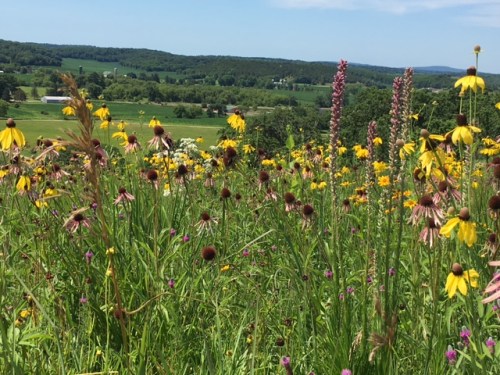submitted by Andrea Kaminski; photos by Karl Gutknecht, Norm Lenburg & Danika Riehemann
A group of 20 Rotarians and guests spent a balmy Saturday morning learning about a true victory for our Wisconsin environment. We visited the Sauk Prairie State Recreation Area, which was created through the commitment of local residents, state and federal governments and the Ho Chunk Nation.



We gathered at the Museum of Badger Army Ammunition, off US Hwy 12 between Sauk City & Baraboo. Verlyn Mueller, museum curator and archivist, told us about the history of the Badger Ammunition Plant based on his considerable research and more than 20 years as an employee. Over a period of several months in 1941, 74 local families were forced to move off their farmsteads to make way for the plant, which remained active through the Vietnam War. The plant was built on land the U.S. government had acquired through the 1837 treaty with the Ho Chunk Nation.
In 1997 the Army announced that the 7,354-acre plant would be decommissioned, and the future of the land was uncertain. Our second tour guide, Curt Meine from the Sauk Prairie Conservation Alliance, noted that the land could have been converted to anything, for example a factory or a race track. Instead, it was converted to the conservations area divided among several landowners.
In 2014 a portion of the Badger Lands were returned to the Ho Chunk Nation, which has already begun to convert much of the parcel to native prairie. That is no small feat. There were 1,400 buildings across the Badger Lands that needed to be removed. Most had lead paint and asbestos siding, requiring special handling and safe disposal.
 Other parts of the property belong to the Wisconsin Department of Natural Resources and the USDA Dairy Forage Research Center. Meine took us to sites on the DNR land, where there is public access. Volunteers have put in trails, and they are working on prairie restoration. One section is a beautiful hillside of lightly forested grassland. Meine said it took 15-20 volunteers, mostly working with hand tools, about three hours to beat back the thicket of invasive shrubs to expose this native Wisconsin oak savanna.
Other parts of the property belong to the Wisconsin Department of Natural Resources and the USDA Dairy Forage Research Center. Meine took us to sites on the DNR land, where there is public access. Volunteers have put in trails, and they are working on prairie restoration. One section is a beautiful hillside of lightly forested grassland. Meine said it took 15-20 volunteers, mostly working with hand tools, about three hours to beat back the thicket of invasive shrubs to expose this native Wisconsin oak savanna.
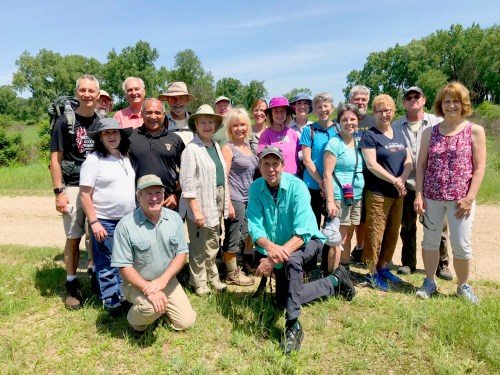
The transformation of the Badger Lands from a decommissioned ammunition plant to a state recreation area that will be restored to native flora and fauna was not a simple task. It involved community action by disparate groups who came to consensus on certain shared goals and values. Tammy Baldwin, first as a U.S. House Representative and then as a U.S. Senator, supported the project by connecting the group with federal grants. The project required years of negotiation and compromise, not to mention untold hours of volunteer planning and labor. The nonprofit Sauk Prairie Conservation Alliance continues to raise funds to carry the work forward.
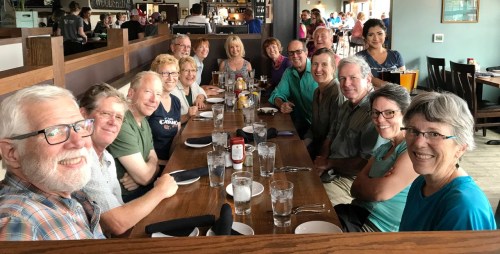
Following the tour, Meine joined us for a delicious lunch at Vintage Brewing Company in Sauk City. We are grateful to Rotarian Karl Gutknecht for arranging this educational and enjoyable outing.
For more photos, visit our club’s Facebook page.
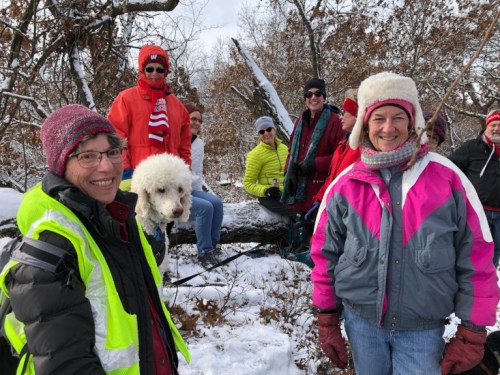







 Other parts of the property belong to the Wisconsin Department of Natural Resources and the USDA Dairy Forage Research Center. Meine took us to sites on the DNR land, where there is public access. Volunteers have put in trails, and they are working on prairie restoration. One section is a beautiful hillside of lightly forested grassland. Meine said it took 15-20 volunteers, mostly working with hand tools, about three hours to beat back the thicket of invasive shrubs to expose this native Wisconsin oak savanna.
Other parts of the property belong to the Wisconsin Department of Natural Resources and the USDA Dairy Forage Research Center. Meine took us to sites on the DNR land, where there is public access. Volunteers have put in trails, and they are working on prairie restoration. One section is a beautiful hillside of lightly forested grassland. Meine said it took 15-20 volunteers, mostly working with hand tools, about three hours to beat back the thicket of invasive shrubs to expose this native Wisconsin oak savanna.

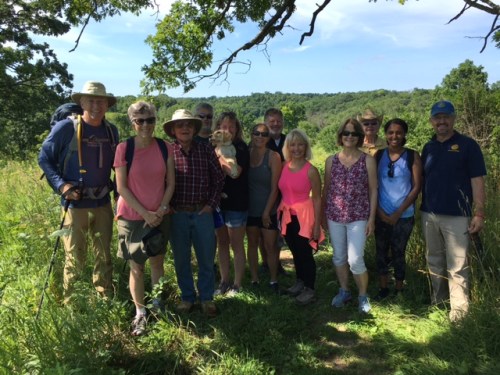 “Embarking on the back road journey 2 miles north of Cross Plains, members of the Rotary Hiking Fellowship had no idea this pristine gem awaited. Towering forests, chin-high rainbows of prairie flowers, and the grand finale– a shelter perched overlooking the driftless region. A view to rival Blue Mounds State Park.
“Embarking on the back road journey 2 miles north of Cross Plains, members of the Rotary Hiking Fellowship had no idea this pristine gem awaited. Towering forests, chin-high rainbows of prairie flowers, and the grand finale– a shelter perched overlooking the driftless region. A view to rival Blue Mounds State Park.
